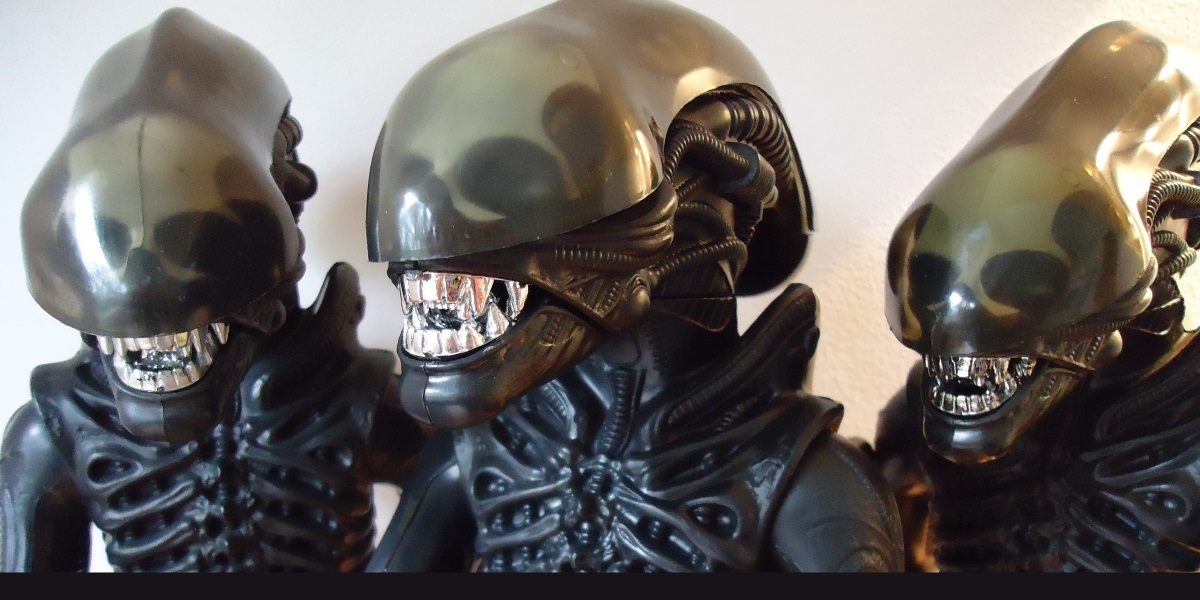
That old DVD case we mentioned earlier becomes very useful at this point. Old DVD cases are a great source of material to construct improvised components for the action figure. Returning this leg to where it belongs won’t be the only time I’ll be using the DVD case, either. There’s one other repair on Mr. Tendril where it will be needed so the case won’t be discarded once this repair is complete.
For this exercise a clear DVD case is desirable, it’s not mandatory and any color DVD case will work. Nonetheless, we can take advantage of the translucent nature of the case later during the assembly when we can see where we want to align and mark holes that need to be drilled. It eliminates the guess work from the exercise that an opaque case will create.

It’s time to rebuild that missing spindle and flange assembly and it’s pretty easy. By selecting any of the ample flat surfaces on the DVD case we cut 2 discs from it. One disc should be an inch in diameter while the 2nd should be about 1.5 inches in diameter. They don’t have to be perfect, either, but the smaller disc should be no larger than 1 inch diameter, as it will become the new spindle that fills the void inside the torso joint cavity.

Both discs are glued together and made sure they are centered as much as possible. Neat is good, but not critical. It’s important to allow the glue to set and then use a leather hole puncher to punch 3 holes through both of them. We are only using glue at this point to make sure the discs will stay in one piece while punching the holes and to help keep them aligned so the glue’s durability is not critical. Any glue will do.
For the sake of assembly, I have found 3 holes to be optimal.

We are ready for fixing the improvised spindle and flange onto the leg. I’m lucky that enough of the original spindle still exists on the leg so aligning the newly made improvised spindle will be easy. I can complete the circle where the original spindle was attached by tracing around it with a coin. This marking will help to locate the proper position to place the cut DVD pieces.
We use the new spindle and flange assembly to mark where the holes are to be drilled with a pen/pencil. Using parts made from a clear DVD makes aligning it with the circle and marking the correct location on the filled in surface very easy.

Finally, I drill the holes into the filler material – not too deep as we don’t want to breach the outer surface on the thigh and leave a nasty looking hole* – and place the discs on the leg with the smallest disc contacting the surface and secure the whole assembly together with the short screws. This repair task is now finished as we now have a new spindle and flange strong enough to hold the leg in place on Mr. Tendril’s torso.

Let’s see how well this repair works with a test assembly. When assembling the figure, I treat the new parts as I would a normal leg and clasp the outer flange inside the torso halves. It should be a little tight. Not too much, but certainly confident enough to hold any position. Which it does.
Both legs are now attached and fit securely on the figure. We can stand him up, sit him down and have full rotation of both limbs. Both are fully attached. Neither are loose. The real beauty of this repair is it’s lack of visibility with all the work concealed within the torso. So it doesn’t matter if you’re good at making such repairs or not.
Regardless, these repairs work perfectly; and when Mr. Tendril is eventually finished, he’ll stand proud and strong with any imminent threat of toppling over onto his face well and truly behind him.
The great thing about this repair method is its repeatable nature. Say, the leg is off center when the figure is fully assembled. Just repeat the process. Unscrew the fasteners, remove the improvised spindle and flange assembly from the leg and fill in the screw holes with filler. Then repeat the above process.
Next, we’ll be getting the right arm re-attached to the figure. It’s a little tricky as we are presented with 2 problems that need to be overcome and we will require an installment for each of them. I’ve done this before, so I already know that’s the case.
-Windebieste.
*Although, drilling an unwanted hole on this figure will just become one more anomaly adding to its ambience. Generally, though it’s to be avoided.
Part 1: Introduction.
Part 2: Assessment and Evaluation(1 of 2).
Part 3: Assessment and Evaluation (2 of 2).
Part 4: Disassembly and Cleaning.
Part 5: Loose Hip Joint Repair.
Part 6: Broken/Destroyed Hip Joint Repair (1 of 2).
Part 7: Broken/Destroyed Hip Joint Repair (2 of 2).
Part 8: Severed Arm Repair.
Part 9: Damaged Shoulder Repair.
Part 10: Improvised Replacement Arm.
Part 11: Final Assembly.





